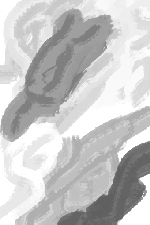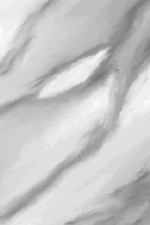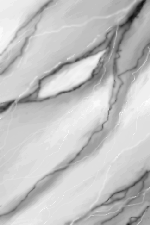Faux marbling
|
|
Faux marble or faux marbling is the painting of painting surfaces so as to imitate the appearance of polished marble. It is typically used in buildings where the cost or weight of genuine marble would be prohibitive.
Faux marbling is a special case of faux stone painting, although the distinctive and varied patterns of marble make it the most imitated stone by far.
| Contents |
History
Faux stone painting was widely used in Pompeii, but it really took off in Europe during the Renaissance with two schools of faux marbling developing. The Italian school was loose and artistic, the French school was formal and realistic. It typically took an apprentice ten years or more to fully master the art.
Modern professional marblers are very skilled and will use a variety of techniques to closely imitate real marbles but many decorators are happy to merely suggest the appearance of marble rather than accurately imitate a particular stone. It is not as difficult to do as it looks. It is perfectly possible for an amateur to produce a beautiful effect with a little practice.
How to paint faux marble
Materials and equipment
- White eggshell paint {sometimes known as semigloss of softsheen}
- Boiled linseed oil {Available in the wood treatment section of a DIY store. It is used to slow the paint drying time}
- White spirit {to thin the paint and clean the brushes}
- A tube of black artist oil paint. "Lamp black" is nice
- Brushes, one of which should be good quality and very soft.
- Two feathers, the traditional one to use is goose but any large feather will do.
- Some rags or lint-free cloths
Method
Stage 1
The surface is cleaned then painted with the eggshell paint and left to dry overnight. The following day the surface is painted with a thin layer of linseed oil. This slows the drying time of the paint considerably and therefore keeps it workable. Next the black oil paint is mixed with a little of the white eggshell to produce a light grey tone, which is added here and there over the linseed oil base. Other shades of grey are used to fill in the gaps so there is a swirly pattern of colour.
Stage 2
A soft, dry paintbrush {two or three inches wide} is used to soften the colour. A rag is dabbed over the surface to break up the colour and remove excess paint, then the surface is softened again with the dry brush.
Stage 3
An artist's brush is used to add a light veining pattern in mid grey. The veins do not cross one another, they do not start or stop suddenly, and they do not fan out from a point. They do go in a diagonal direction, but they are never regular or even.
Colour can be removed from part of the surface, if required, by dipping the artist's brush in white spirit, and lifting the colour off with the brush. The whole surface is then thoroughly resoftened with a dry brush, or a crumpled cloth.
Stage 4
Fine veining is added with a feather. The feather is dipped in white spirits and roughly brushed backwards to separate the bits. Then it is dipped in thin charcoal grey paint and used as a brush to add the fine wiggly veins. Light coloured veins can be added either by dipping a feather into off-white paint or by dipping the feather into white spirits. As it is drawn across the surface the white spirit dissolves the paint underneath and a light vein appears. The whole surface is then gently softened with a very soft brush - traditionally badger hair is used.
See also
External Links
- [1] (http://www.ku.edu/~russcult/culture/visual_index/kuskovo.html)



